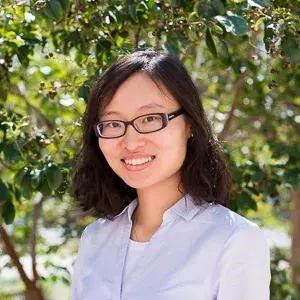北京时间昨天(2019年9月5日)晚上,科学突破奖(Breakthrough Prize)委员会宣布,将2020年物理学新视野奖(New Horizons in Physics Prize)授予陈谐为首的九位青年物理学家,他们分别来自凝聚体物理学、天体物理学和量子场论这三个领域。凝聚体物理学为三个邻域之首,共同获奖人是Lukasz Fidkowski、Michael Levin 和 Max A. Metlitski,表彰他们对于理解拓扑物质状态及其关系的深刻贡献。新视野奖授予有潜力的年轻科研人员,获奖者将获得10万美元奖金。
陈谐2006年大学毕业,今年在35岁左右。
公众号“返朴”立即发布了对陈谐的采访录,一个邻家女孩讲一个平淡无奇的成长故事。她的成长,既没有外部的压力,也没有内生的纠结。每个人的成长,都要经历很多次的选择,而每一次选择都是歧路。陈谐的幸运是,在每一次的歧路前,她总能在不自觉地和内心的要求进行对准,而且每一次都成功了。
有一次,玻尔如此评价狄拉克:“在所有的物理学家中,狄拉克具有最纯粹的心灵” (Niels Bohr said: "Of all physicists, Dirac has the purest soul.") 其实,只有具有纯粹的心灵者,才能发现同类。陈谐妹子就是这种纯粹精神世界在人世间的使者。
“我研究生去MIT的时候,最初还想着学两年物理可能转到金融或者咨询领域挣钱去。后来我忽然想明白自己要做research,是因为跟我同学去参加一个招聘会,做那些面试题,跟面试的人聊天后,我忽然发现这跟research的思路非常不一样,而且文化也不一样,因为这两点,我开始考虑也许学术圈更适合我,之前我从来没有想过我一个女孩子要去做理论物理研究。但是慢慢做着做着就发现,自己做得挺开心的。”
“在我成长的过程中,会感受到身边很多人的激励和影响,会被他们的科学精神感动。比如现在我的一位同事,他是一位非常资深的教授,在凝聚态实验方向做出过一系列里程碑式的工作。他原来有一个很大的实验组,到他60岁时,他说我要退休了,这样就可以不用教书,也没有系里的行政任务了,他的目的就是一个人回到实验室去自己做实验,重新回到一个研究生的状态,他就喜欢做实验,如今他照样出很好的结果。像这样沿着自己几十年来一直想做的方向做,这真正是一个科学家的状态。
“还有一位同事是做理论研究的教授,是美国科学院院士,60多岁了,有一次我跟他一起去开会,一个星期的会,从早到晚,大概45分钟一个报告,他每个报告都坐在那里听,然后会拍一张照片,写一句话总结报告的内容,有时候还加入一些自己的评论,发到推特上。我觉得自己完全做不到,因为每个报告都听是很累的事情,而且这些报告涉及的方向非常广,必须对每个领域都很了解,还得理解报告本身的内容,才能写出一个总结。
“身边这种例子让我很感动,看到一种特别纯粹的做科学的状态。我们有时候似乎会陷入一种误区,把精力耗在人与人、组跟组之间的竞争上,但科学的对手其实是自然,自然那么大的空间,好多东西我们都不知道,人家能做出来,我就去干点别的就好了。如果是这样的状态,大家就会形成一种互相启发、互相帮助,共同面对大自然的状态。当然这是一种特别理想的状态,但起码我们可以去追求这种状态。”

她的14篇代表作,每一篇都达到了一个明确的目标!
1. Symmetry protected topological phases from decorated domain walls”
Xie Chen, Yuan-Ming Lu, Ashvin Vishwanath
Nature Communications 5, Article number 3507, (2014)
A physically intuitive picture for constructing a large class of symmetry protected topological phases.
2. “Symmetry Enforced Non-Abelian Topological Order at the Surface of a Topological Insulator”
Xie Chen, Lukasz Fidkowski, Ashvin Vishwanath
Phys. Rev. B 89, 165132 (2014)
A proposal that the 2D surface of 3D topological insulators can be gapped without breaking symmetry due to strong interaction and results in exotic topological properties on the surface.
3. “Symmetry Protected Topological Orders in Interacting Bosonic Systems”
Xie Chen, Zheng-Cheng Gu, Zheng-Xin Liu, Xiao-Gang Wen
Science 338, 1604 (2012)
A systematic construction of bosonic SPT phases with any internal symmetry and in any dimension.
4. “Symmetry protected topological orders and the group cohomology of their symmetry group”
Xie Chen, Zheng-Cheng Gu, Zheng-Xin Liu, Xiao-Gang Wen
Phys. Rev. B 87, 155114 (2011)
A systematic construction of bosonic SPT phases with any internal symmetry and in any dimension.
5. “Two-dimensional symmetry protected topological orders and their protected gapless edge excitations”
Xie Chen, Zheng-Xin Liu, Xiao-Gang Wen
Phys. Rev. B 84, 235141 (2011)
Construction of nontrivial 2D SPT model with Z_2 symmetry. The non trivialness of the boundary is proven using the matrix product operator formalism.
6. “Classification of Gapped Symmetric Phases in One-dimensional Spin Systems”
Xie Chen, Zheng-Cheng Gu, and Xiao-Gang Wen
Phys. Rev. B 83, 035107 (2011)
Classification of 1D SPT phases using the matrix product state formalism.
7. “Bosonic topological crystalline insulators and anomalous symmetry fractionalization via the flux-fusion anomaly test”
Michael Hermele , Xie Chen
arXiv:1508.00573, (2015)
The flux fusion anomaly test and its application to 2D topological phases with spatial symmetry.
8. “Anomalous Symmetry Fractionalization and Surface Topological Order”
Xie Chen, Fiona J. Burnell, Ashvin Vishwanath, Lukasz Fidkowski
arXiv:1403.6491, (accepted by Phys. Rev. X)
A general method for detecting anomalies in 2D symmetry fractionalization patterns with discrete unitary internal symmetries. The procedure is demonstrated explicitly using the projective semion model.
9. “'Gauging' time reversal symmetry in tensor network states”
Xie Chen, Ashvin Vishwanath
arXiv:1401.3736, (2014)
Introduce the notion of ‘gauging’ time reversal symmetry in the tensor network formalism and demonstrate how it can be used to detect topological order.
10. “Tensor Product Representation of Topological Ordered Phase: Necessary Symmetry Conditions”
Xie Chen, Bei Zeng, Zheng-Cheng Gu, Isaac L. Chuang, Xiao-Gang Wen
Phys. Rev. B 82, 165119 (2010)
Study the stability in the tensor network representation of Z_2 topological order and find a necessary symmetry condition.
11. “Classification of Gapped Symmetric Phases in One-dimensional Spin Systems”
Xie Chen, Zheng-Cheng Gu, and Xiao-Gang Wen
Phys. Rev. B 83, 035107 (2011)
Classification of 1D SPT phases using the matrix product state formalism.
12. “Local Unitary Transformation, Long-Range Quantum Entanglement, Wave Function Renormalization, and Topological Order”
Xie Chen, Zheng-Cheng Gu, and Xiao-Gang Wen
Phys. Rev. B 82, 155138 (2010)
Define long / short range entanglement and propose their detection from wave function renormalization.
13. “Quantum circuit complexity of one-dimensional topological phases”
Yi-Chen Huang, Xie Chen
Physical Review B 91, 195143 (2015)
Proving that one dimensional (symmetric) topological phases require a (symmetric) quantum circuit of at least linear depth to be generated.
14. “Gapped Two-body Hamiltonian whose Unique Ground State is Universal for One-way Quantum Computation”
Xie Chen, Bei Zeng, Zhengcheng Gu, Beni Yoshida, Isaac L. Chuang
Phys. Rev. Lett. 102, 220501 (2009)
A two-body Hamiltonian resource state for measurement based quantum computation.
http://www.its.caltech.edu/~xcchen/publications.html
转载本文请联系原作者获取授权,同时请注明本文来自刘全慧科学网博客。
链接地址:https://wap.sciencenet.cn/blog-3377-1196919.html?mobile=1
收藏


